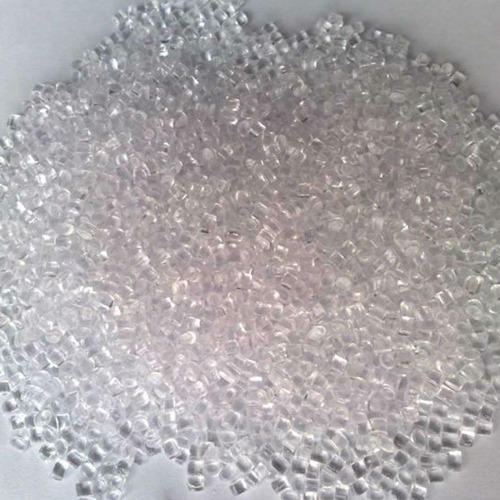Plastic Injection Molding Parts
Injection molding is a process of manipulating plastic material to make parts using suitable molds. The process entails injecting molten plastic into a mold cavity. Molded parts vary in size, shape, design, and complexity. They are designed to offer cost-effectiveness, high production volumes, design flexibility, and the ability to achieve intricate details and complex designs.
Plastic Injection Molding Parts Materials

Polypropylene is a versatile material with high chemical resistance making it suitable for the production of molded parts for injection molding.

Polyethylene is suitable for the production of molded parts that require toughness, low friction, electrical insulation, and moisture resistance.

Polystyrene on the other hand is preferred for its low cost, ease of processing, good dimensional stability, and clarity.

This material is used for plastic injection molded parts because of its flexibility, durability, impact resistance, and abrasion resistance.

Nylon has high strength, excellent wear resistance, low friction, and high-temperature resistance making it suitable for molded parts production.

ABS is known for its strength, impact resistance, and dimensional stability, and can be easily molded making it perfect for molded parts production.
Benefits Of Plastic Injection Molded Parts
Wide Variety of Materials – They can be used to produce products of a variety of materials including thermoplastics, elastomers, and composites.
Great Tolerances and Repeatability – Molded parts for plastic injection are tolerant and can withstand frequent repeatability while producing quality products.
High Productivity – They enable high production cycles because they can be used repeatedly to enhance high-volume manufacturing.
Good Visual Appearance – Molded parts are intricately designed to produce smooth, polished, and aesthetically pleasing products enhanced by surface finishing.

Limitations Of Plastic Injection Molding Parts


Although plastic injection molding parts have many advantages, they have their share of disadvantages which may include the:
High Startup Costs for Tooling – Plastic injection molded parts are intricate and sometimes complex to produce. Sometimes you have to make multiple prototypes to get it right and this can prove costly.
Expensive To Change Designs – After production, molded parts can prove difficult to change their designs and you will be forced to make a new part if you want a different design.
Relatively Longer Lead Times – Parts take time to design and manufacture because of the processes they undergo, from design to testing, before they are ready to be used.
Plastic Injection Molding Parts Defect – Some of the defects that you might encounter while designing and manufacturing parts may include:
Warping – Warping is usually a result of the part not cooling evenly or completely. This may lead to undesired shape especially when ejecting it from the mold cavity.
Sink Marks – Sink marks are also a result of uneven cooling or the molten material not being evenly distributed in the mold cavity. It can also result from not injecting the molten material under high pressure. The result is part shrinkage and depression.
Drag Marks – Drag marks are caused when ejecting the mold from the mold cavity. They can result from mold sticking on the mold cavity or friction during ejection.
Knit Lines – Knit lines are where the mold joins as a result of the flow and subsequent cooling of the molten material. If not checked and tested, they can affect the aesthetic and strength of the molded part.
Short Shots – These are defective molded parts that result from the incomplete filling of the mold cavity. They are simply discarded or melted again.
Plastic Injection Molded Parts Examples


Medical Industry
It is used in the medical industry to make parts such as:
- Enclosures for medical devices
- Parts for drug delivery systems
- Diagnostic tool castings
- IV connectors
- Laboratory consumables
- Handles for surgical instruments
Automotive Industry
Plastic injection molded parts in the automotive industry include:
- Door handles
- Engine covers
- Electrical connectors
- Interior trim parts
- Dashboard components
- HVAC system components
Electronic Industry
Examples of plastic injection molded parts in the electronic industry include:
- Sockets and connectors
- Components for LED lighting
- Battery compartments
- Housings for electronic devices
- Buttons and switches
- Cable management accessories
Consumer Goods Industry
Plastic injection molded parts in the consumer goods industry include:
- Packaging containers
- Games and toys
- Utensils and kitchenware
- Appliance parts
- Containers for personal care products
- Furniture components
Industrial Equipment Industry
Some of the plastic molded parts in the industrial equipment industry include:
- Valve and pump components
- Parts for the conveyor system
- Electrical enclosures
- Machine enclosures
- Components for safety equipment
- Hand tools
Surface Finishes for Plastic Injection Molding Parts

The glossy finish is achieved through thorough polishing until a smooth and reflective surface is achieved.

A semi-gloss finish is a moderately shiny surface that is between a gloss and matte finish.

The matte finish is not reflective and has a somehow coarse surface that is not shiny and does not produce glare.

A textured finish involves adding patterns to the part to enhance grip, aesthetics, or required patterns that are functional to the part.

The as-machined finish is a finish that is a result of the machining process. This finish is usually used for functional parts that must be incorporated into the final part.
Plastic Injection Molding Parts Process
Plastic injection molded parts are made using the following steps:
Step 1: Design
The first step involves designing the desired part. This can be done through 3D printing or CAD.
Step 2: Mold Creation
After designing the part, you have to make the mold of the part you want. This is done by creating the mode into two halves known as the core and the cavity.
Step 3: Material Selection
The next step to take is choosing the right material to fill into the mold cavity. This can be either thermoplastic, elastomers, or composites.
Step 4: Melting
Heat the material you have chosen to the melting point.
Step 6: Injection
After you have melted the material, inject it into the mold cavity. Ensure you use high pressure to ensure that it is evenly distributed.
Step 7: Cooling
Leave the injected material to cool. You can also use air- or water-cooling methods to cool down the injected material.
Step 8: Ejection
After the material has cooled completely, eject it from the mold cavity by separating the cavity from the core.
Step 9: Finishing
Lastly, work on the surface finishing by trimming, polishing, or surface treating your part.





